I
I regret worrying so much about the whole world while those who could really change things didn’t give a flying fuck. / I regret paying so much attention to the great masterpieces and not paying attention to the small masterpieces. / I regret thinking that being an artist makes you special. – Full text can be found here.
The fragments that make up the motto come from a video work that was on my mind for a while around the start of the Allofus. (A pandemic is a democratic context, because if we were to translate it from Greek, that is what it would mean – all the people – pan plus demos.) The work belongs to Ramona Nagabczyńska and is titled Don’t worry, everything will soon be as it was before. The work raised the conceptual bar high for Polish artists trapped all over the place during quarantine restrictions. The work was showcased in a broader project titled Project Quarantine, curated by Tomasz Plata and initiated by two important theaters in Warsaw: Studio and Komuna Warszawa. The participants, mainly theater workers, actors, directors, critics, choreographers, and dancers from the young and middle-aged generations were to create and record shows in their own homes, under quarantine conditions, using only the recording devices on hand and all in one take. The pilot was released on March 30, and the works were then published regularly on Studio Theater’s website, where they can still be watched at the time of my writing this. Even though there were no time restrictions, the shows were mainly mini films. Any other participants had to be people the artists were quarantining with. Comedy was something that was aimed for, as the participants were suggested to use only objects from the following list as props: pasta, rice, toilet paper, flour, yeast, bread, milk, cartons, frozen food, garlic, onions, vitamin C, zinc and other immunity boosters, soap, cleaning solutions, and alcohol. They were also suggested to take inspiration from the 52 Portraits project, started in 2016 by choreographer Jonathan Burrows, composer Matteo Fargion, and video artist Hugo Glendinning, as well as from Complete Works: Tabletop Shakespeare, produced by Forced Entertainment in 2016. Project Quarantine was one of a number of important, and very welcome, institutional initiatives aiming to support art workers.
Throughout her video, all Ramona Nagabczyńska does is smile in close-up for six minutes. Later she would state in an interview that such an exercise produces a sharp and hard to control vibration in the face muscles. They start to hurt, which quickly becomes unbearable. A self-imposed facial expression comes therefore to cease being an expression, a sign, instead becoming an extreme kind of physicality. The facial choreography was an inherent part of the work, a medium through which to read the inside. For me however, the brilliant content lies in the subtitles, projected, as normally, at the bottom of the picture, offering the viewer the most coveted and denied object of desire: the ability to enter someone’s mind and read their thoughts. What we read in this case is truly a manifesto. The artist later stated that one raison d’être of the work was the fact that the cultural institutions she was collaborating with were incapable of saying how they planned to function in the future. Nobody knew anything, not even about the events planned for the second half of this year or for next year. This is, undoubtedly, the moment where our current value system needs to be rethought and surpassed. Regrets are inevitable. I find it implicit that Nagabczyńska’s manifesto is an iconic illustration of the need to change the value system we are disillusioned with. Bruno Latour wrote about this same need at the end of March, in a text titled What protective measures can you think of so we don’t go back to the pre-crisis production model?
With the exception of a medieval French song, sung in French by Barbara Kinga Majewska, with Polish subtitles, the videos in the project were exclusively in Polish, rather geared towards a local audience. But because Nagabczyńska’s work goes beyond Polish culture, the language impediment can be easily overcome thanks to Revista ARTA.
II
In the meantime, Poland’s Minister of Culture and National Heritage announced a new support program for artists, creators, and institutions that had been rendered unable to work by the epidemic. The Network Culture program was supposed to change the way we convey our actions and art objects, or to present the effects of this kind of work through digital communication channels, that is, mostly through the internet. The program’s budget was fixed at 20 million RON (approx. 4.1 million Euros). Five million were allocated towards artists’ grants and 15 for institutions and organizations. Applications could be submitted until April 20. Due to the massive interest (around 12,000 applications), the program’s budget was increased fourfold to 80 million RON, 20 million of which were to go towards artists’ grants and 60 million towards subsidizing institutions and organizations. The minimum allowance was 5,000 and the maximum was around 150,000 RON.
The program was advertised not so much in terms of supporting artists, as in terms of artistic production, as a kind of material hand-out with the aim of promoting and increasing the consumption of Polish culture. They emphasized that the projects that would receive priority would be those referencing the tradition and achievements of Polish – but also world – cultural heritage, as well as those proposing innovative solutions, in terms of forms of expression and means of communication. Culture was very broadly defined. The Ministry encouraged projects involving organizing online workshops and events, webinars, e-learning classes within the field of cultural education, and other online activities, like concerts, shows, readings, recitals, or meetings with artists and creators; from creating or utilizing existent digital museum, library, or audio-visual platforms, creating websites or apps geared towards promoting digital resources, to designing online games and electronic books, in both text and audio format. The project came together with a one-time payment of around 1500 RON (approx. 310 Euros), so around 80% of the minimum wage, to those who applied for support. Even though they said the program was open to professionals from the fields of literature, visual arts, music, dance, theater, film, folk art, animation, cultural education, and cultural management, one can say that visual artists were disadvantaged in this competition from the start. The online environment is not necessarily the best for interacting with contemporary art, dance, literature, etc. One could also read a note of political propaganda in this program – I could add that Network Culture came together with the current president’s election campaign. But many of the people and institutions that benefitted from the program are involved in projects that undoubtedly deserve our attention. It remains to be seen how interesting and politically biased the projects resulting from this program will be. The program ends this October.
III
In the meantime, in light of the epidemic, the presidential election campaign should have been postponed, but the government did not want to change the election date. The other candidates grit their teeth and consented to a hiatus in their campaigns, which, evidently, gave current president Andrzej Duda, supported by the PiS, a huge advantage. His every visit to a hospital or on the field was a free campaign ad on national television. Even though the Sejm were having heated discussions about changing the date of the elections, which did eventually happen, the slowness of this decision led to the only woman candidate, Małgorzata Kidawa-Błońska, supported by the main opposition party, the neoliberal platform PO, dropping out. One of her officially stated reasons for doing so was that voting would be literally dangerous for the voters. PO decided to coopt someone else instead: the current mayor of Warsaw, Rafał Trzaskowski, who reached the second round, losing by just a few points to the current president. A law concerning voting by post had also been hastily passed. Poles living abroad were therefore able to vote by mail in the presidential elections, the law having been changed overnight.
But before these changes, a group of activist artists organized a brilliant protest action titled Letter, which, in my view, had a clear impact on the events described above, with some critics seeing it as one of the most important works made in this period. On May 6, donning masks (not because they wished to remain anonymous, but tor respect quarantine law – masks and a 2-meter distance from each other), a group of artists and curators went to work. Their names were Marta Czyż, Marianna Dobkowska, Magdalena Drągowska, Michał Frydrych, Karolina Grzywnowicz, Yulia Krivich, Jakub Rudziński, Julia Minasiewicz, Jan Możdżyński, Weronika Zalewska, and Paweł Żukowski. This artist collective aimed to contest the new restrictive policies imposed by the government as well as the rankings of professions/occupations from most to least useful which were circulating in the media and social networks. They attacked this derogative discourse, peddled by some leftist sources too, towards art workers. They carried with them an employment contract from the Warsaw-based foundation Bęc zmiana, which was very active in the field of culture and also edited the excellent magazine Notes na 6 tygodni (Notes for 6 weeks). Why are couriers, postal workers, garbage collectors, and doctors allowed to go out during quarantine but artists aren’t allowed to work in the public space? Why do we accept pizza deliveries but not the possibility of artists’ work in the public space? – We believe that the kind of imagination that art triggers only truly manifests itself when it escapes the gallery or museum into the streets, the police station, the hospital, said the authors, emphasizing the need of artists’ presence in the public space. They are those able to mediate on behalf of the demos, by visually translating, and thereby introducing into the public forum, the political debates in the Sejm, for instance.
The action started next to Warsaw’s Main Post Office, where a large banner in the form of a letter was unveiled. It was 14 meters long, and as sender they wrote We, the Sovereign (that is, the people) and addressed it to the Sejm (the Polish parliament). One might say we witnessed a successful remake of the famous 1967 happening with Tadeusz Kantor’s giant letter. As in Kantor’s time, when the letter was transported by seven postal workers accompanied by milicja officers from Ordynacka street to the famous Foksal gallery, this new Letter, bearing stamps showing the iconic spiky spheres (Covid-19), with the price written in Celsius (40 degrees), was accompanied by police. On the letter was written, in Polish, TO LIVE NOT, TO DIE. In the vicinity of the Central Post Office, officers asked for the artists’, their companions’, and even journalists’ IDs and acknowledged the validity of the document released by Bęc Zmiana. Initially they did not object to the action, but, in the end, they still fined each artist (around) 500 RON for disturbing the peace and contacted the Health Department. Officers thought the artists did not respect mandatory social distancing measures. The Health Department then fined each participant 10,000 RON. The artists did not accept the fines and received them later. In the meantime, a crowdfunding campaign raised 100,000 RON in just a few days. With the intervention of the Polish ombudsman, Adam Bodnar, a few of the fines were nullified.
The artists prepared and carried out their action very carefully. They kept the 2-meter distance between them at all times (2.36 meters, to be more precise) and all wore masks. The letter was delivered to the Sejm on the day they would vote on the so-called “postal law,” which, rumors had it, would have given minister Jacek Sasin and leading party PiS a certain control over the postal votes at the upcoming presidential elections, scheduled for the 10th of May. Without this action, the law could have slipped past voters completely. Through their action, the artists emphasized the value of human life and protested the governing party’s decision to go on with the election in spite of a rising number of daily Covid-19 infections. On the one hand, they demanded a symbolic change to their message, TO LIVE NOT, TO DIE, by placing the comma before NOT. On the other hand, they insisted on correcting the political discourse of the politicians in power: We do not agree with organizing elections to the detriment of citizens’ safety! While governing parties are trying to adopt a law to favor them, our lives, the lives of the voters, are put on the line, declared the artists. The letter was eventually received by the center and left-wing opposition, who came out and received the object personally in front of the Sejm building.
IV
Because a calamity never comes alone, the Covid virus came to Poland accompanied by drought. The whole month of March scarcely saw a drop of rain. This situation led to, or somewhat even imposed, a return of sorceresses. They came versed in various fields, with knowledge of information technologies, art, and politics. In their daily practice they are involved in saving rivers and nature reserves, as well as in connecting humans to nature. Their collective is called the River Sisters, and they are behind one of the most interesting collective Zoom works – a rain invocation. The work was titled Peperuna, after the Slavic rain goddess, the wife of Perun, and in English it would sound something like Peperuna walks from house to house / Give rain, oh Sky, upon golden wheat, each river sister is a raindrop / Give rain, oh Sky, so that the rye may grow, the rye and the vegetables / Give rain, oh Sky, upon golden wheat, we, the river sister, summon the rain, give rain, oh Sky, upon azure hair… The band Sutari is also part of the collective, and they probably contributed a lot to the incantation. On the other hand, one of the first characters in the video work is artist, curator, and activist Cecylia Malik. Before beginning the song she takes off her azure mask, on which waves are painted. A few months after the event, multiple members of the group organized an impressive and powerful exhibition at the Contemporary Art Center Wiewiorka in Krakow, titled You won’t stop the river. Perhaps the exhibition should be discussed in more detail, but I found Małgo Grygierczyk’s ceramic plates (SOŁA River), extremely eloquent, as were the embroideries done on bathing suits, thereby transforming them into wearable political banners, and the documentation of numerous protests and information campaigns the collective carried out. The River Sisters work mostly around Krakow. Of course, mere days after the video was uploaded, the rains returned to Poland and nature came to life, and they are still with us, to the joy of gardeners.
V
In other words, the Allofus Covid highlighted both the power and feistiness of art. But what about the virus itself? Can art defeat Covid? A new installation in the Nowolipie community garden seems to suggest just that. It looks like a strange object. One might say it is an artificial plant with an unusual structure. The sculpture, which is made from recyclable materials and is based on the model of the Covid-19 virus, was titled Coronastrach. This object had the job of taming and transforming our fear associated with the pandemic, stated its author, Magdalena Romanowska, who collaborated with Konrad Trzeszczkowski and Paweł Gawlik. As a side note, the publications used in constructing the sculpture contained, among other things, articles about Covid-19. The cans attached to the central sphere by wires rattle, scaring off any birds coming to steal the seeds planted nearby. The sculpture reminds birds and humans alike to keep social distancing in mind. It is not just a scarecrow, it is like fear itself. Regardless, the appearance of this modest work has not been correlated with a drop in infections in Warsaw, Poland, or the world. Probably because people haven’t heard of it yet. But when they do, just you wait and see, the virus will be on its way out.
Translated by Rareș Grozea
POSTED BY
Teodor Ajder
Teodor Ajder was born in Chișinău. He studied psychology at Babeș-Bolyai, Cluj-Napoca, and got his master's degree in education sciences and his doctorate in media, information and environmental sc...

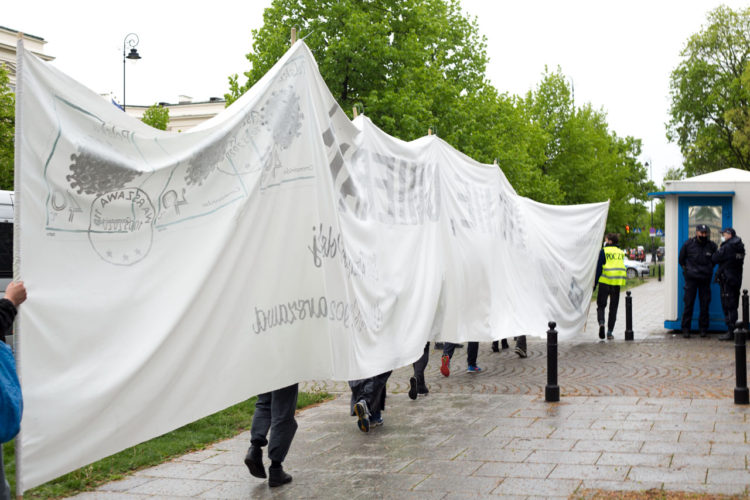
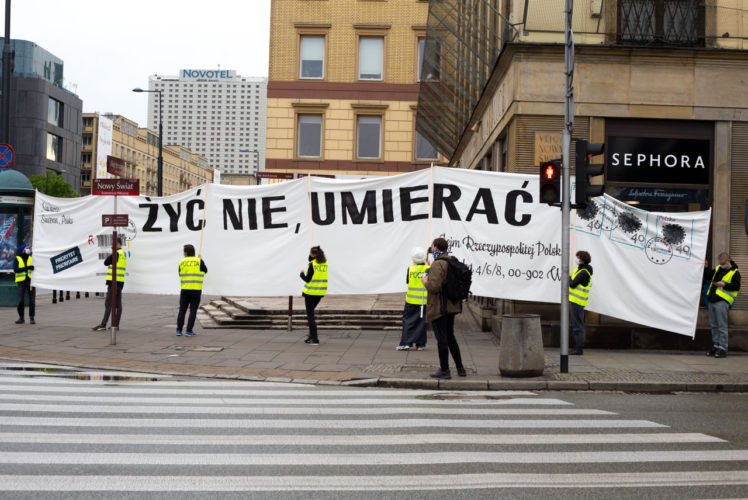
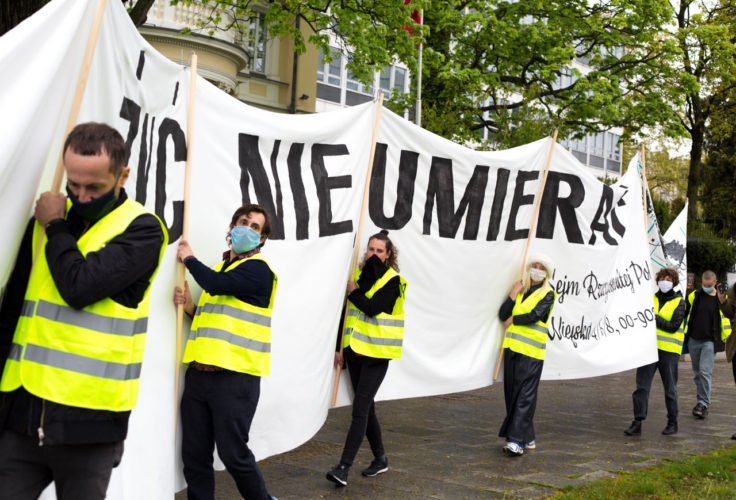
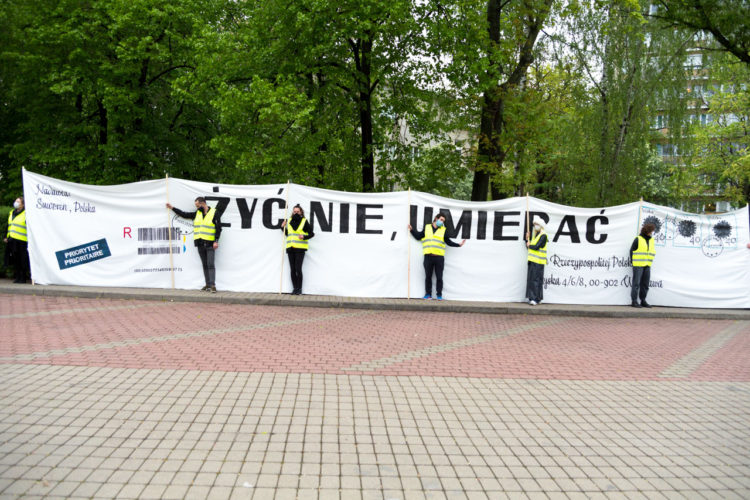
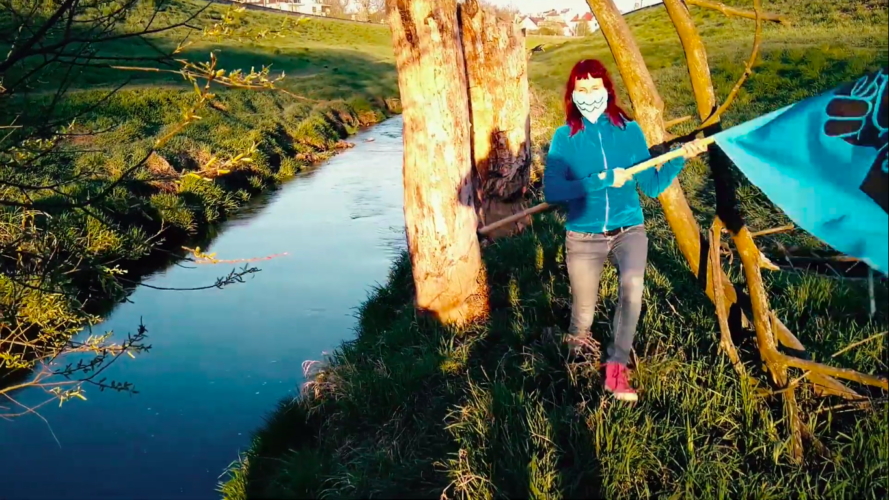
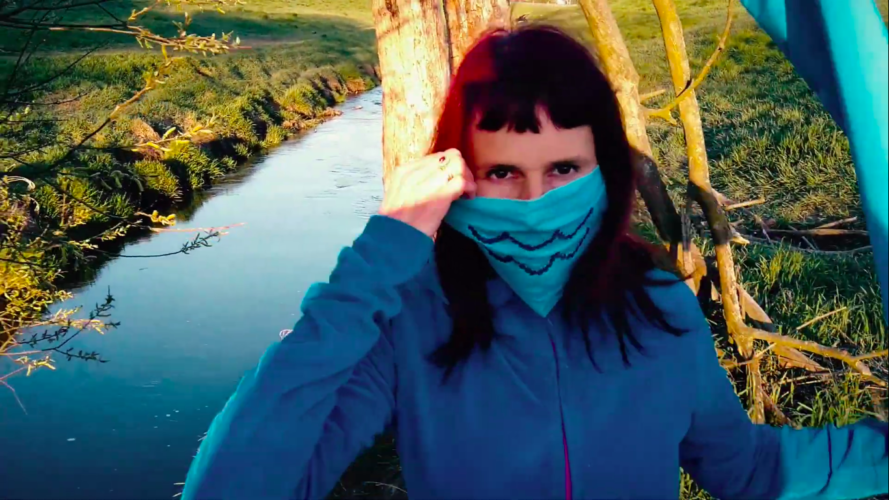

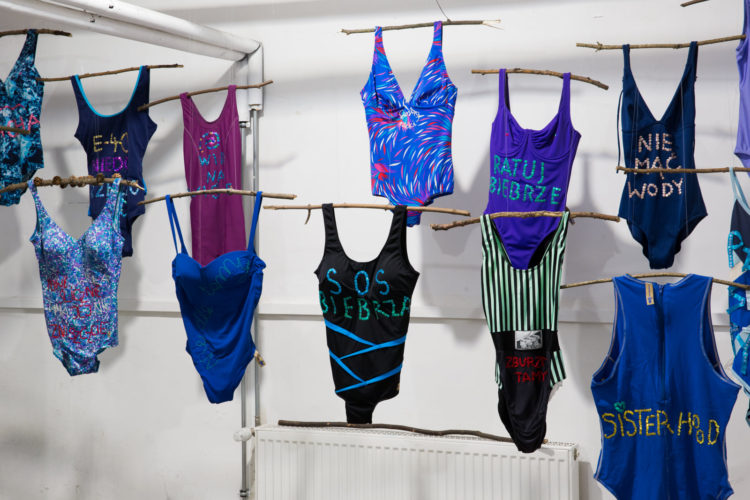
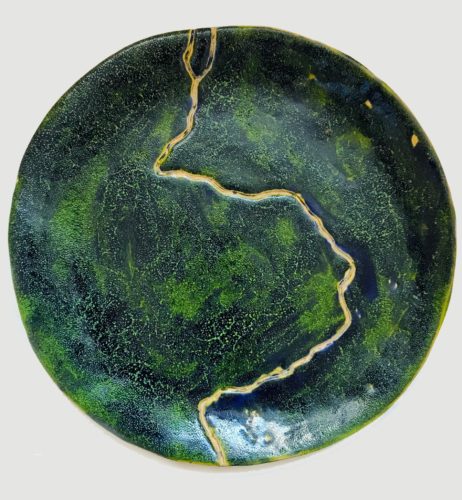
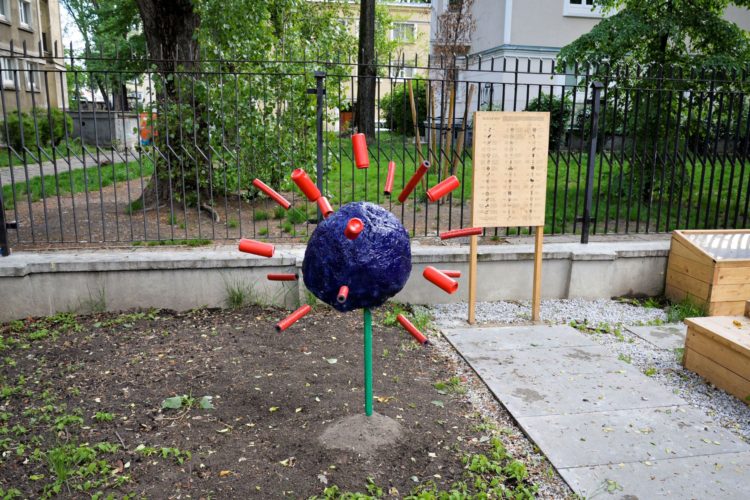
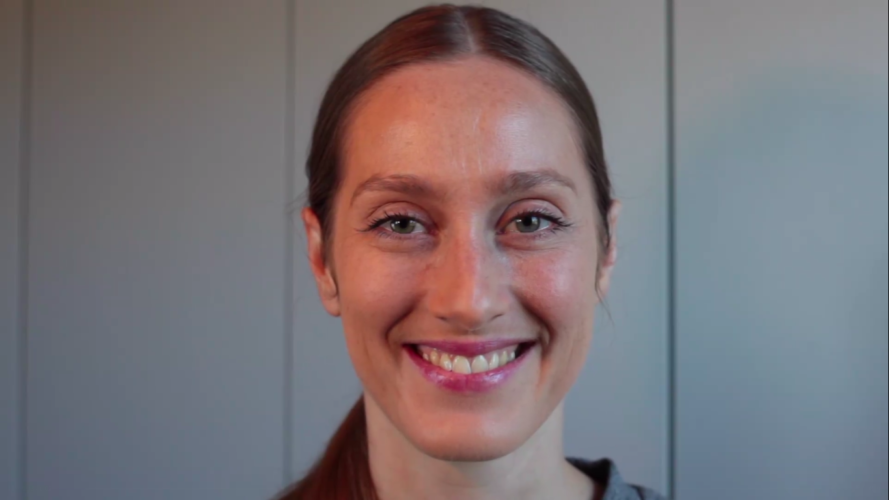
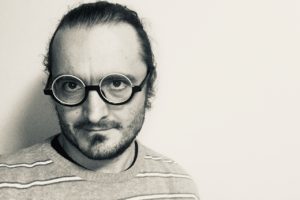
Comments are closed here.